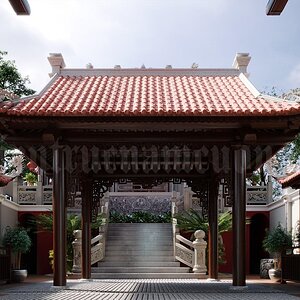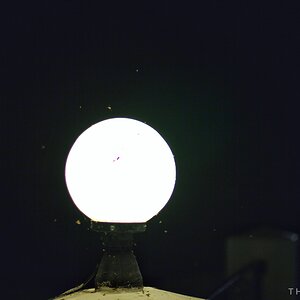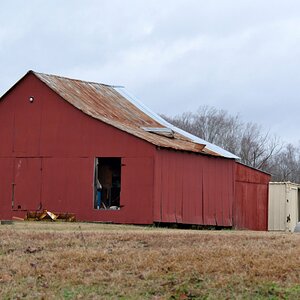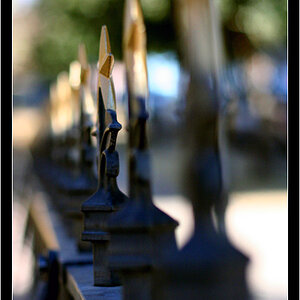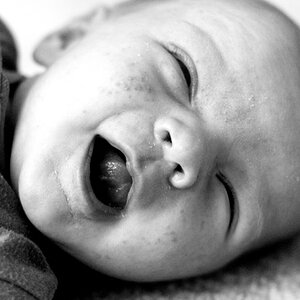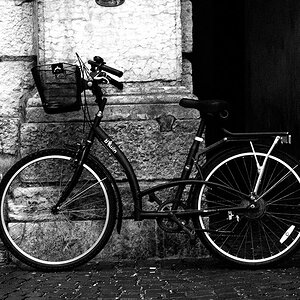Navigation
Install the app
How to install the app on iOS
Follow along with the video below to see how to install our site as a web app on your home screen.

Note: This feature currently requires accessing the site using the built-in Safari browser.
More options
You are using an out of date browser. It may not display this or other websites correctly.
You should upgrade or use an alternative browser.
You should upgrade or use an alternative browser.
Metering a few light sources for light ratios
- Thread starter marius_s
- Start date
marius_s
TPF Noob!
- Joined
- Jul 31, 2012
- Messages
- 15
- Reaction score
- 0
- Location
- Lithuania
- Can others edit my Photos
- Photos NOT OK to edit
Marius:
Here's 2 good tutorials from Mark Wallace about light meters and ratios. These are great vids to get you on your way.
Digital Photography 1 on 1: Episode 10 - YouTube
Digital Photography 1 on 1: Episode 11 - YouTube
Thank you, Tee. Mark is an excellent teacher, i'll definately need to have a look.
marius_s
TPF Noob!
- Joined
- Jul 31, 2012
- Messages
- 15
- Reaction score
- 0
- Location
- Lithuania
- Can others edit my Photos
- Photos NOT OK to edit
You have ONE BIG problem: You wrote: - we have a model and 2 light sources
- model is facing the camera directly
- lights are on both sides in front of the model, facing the model at 45 degrees
- both lights provide the same output (flat lighting) and need to be converted for a 1:2 portrait lighting
Okay...the problem is that the two lights are going to basically cancel one another out if they are left at the same distance. This is a terrible way to light...two lights, equal power, and equal distance, aimed in at the subject at 45 degrees....ummmm....that's kind of like a copy stand lighting setup where the goal is perfectly flat, even lighting with an exact 1:1 ratio....TOTALLY FLAT, totally EVEN lighting.
What you ought to do is angle the MAIN light in at the subject from 20 to 50 degrees,depending, and then aim the FILL light straight ahead, from a position right NEXT to the camera.
I shouldn't post such long posts
marius_s
TPF Noob!
- Joined
- Jul 31, 2012
- Messages
- 15
- Reaction score
- 0
- Location
- Lithuania
- Can others edit my Photos
- Photos NOT OK to edit
gsgary, sorry, but this is not what i asked. This was just the most simple example i could come up with.
Basically your fill light will be 1 stop lower than your main light, do you know what a stop is ?
Yes, i do know what a stop is, as can be seen by the numbers 4.0 and 5.6 in my original post
Helen B
TPF Noob!
- Joined
- Sep 16, 2007
- Messages
- 3,296
- Reaction score
- 467
- Location
- Hell's Kitchen, New York
- Can others edit my Photos
- Photos NOT OK to edit
Marius:
Here's 2 good tutorials from Mark Wallace about light meters and ratios. These are great vids to get you on your way.
Digital Photography 1 on 1: Episode 10 - YouTube
Digital Photography 1 on 1: Episode 11 - YouTube
Thank you, Tee. Mark is an excellent teacher, i'll definately need to have a look.
He may be a good teacher, but he doesn't seem to understand lighting ratios very well.
2WheelPhoto
TPF Noob!
- Joined
- Apr 14, 2011
- Messages
- 6,844
- Reaction score
- 996
- Location
- Tampa
- Can others edit my Photos
- Photos OK to edit
I use my light meter a LOT for set up and strobe/ambient ratios, I still learn a lot from you all and thanks!
MLeeK
TPF Noob!
- Joined
- Oct 20, 2011
- Messages
- 6,761
- Reaction score
- 1,380
- Location
- NY
- Can others edit my Photos
- Photos OK to edit
Forgive me, you have me really confused-not a tough thing to do at this point on any given morning...So that the light from other sources isn't affecting your measurement.
Do you actually have a meter or are you using the in camera meter?
What exactly does the assignment read that you have to do?
What are the settings on the back of your lights? They should easily tell you what the output is and you should be able to set the ratio according to that.
Here's a tutorial that may also help you a bit: Portraits with Two Lights: Adding a Fill Light
Then there's no need to remove the dome then as i only have one light source at a time when measuring them individually.
There is no assignment whatsoever, i just wanted to know where to point the meter when measuring individual lights ;] And yes, i do have one
I know there's settings on the lights themselves, but imagine that the're ain't - my method would work in both cases. The only problem is that it's a little more difficult than looking at the output values on the lights themselves.
Thanks for the explanation about the dome - makes sense now
How is there no settings on the lights you are using? If there is no settings, you can't adjust the lights, so there is no way to create the ratio unless you use two different powered lights...
I could be over-simplifying things I guess... Or totally off base...
Mike_E
No longer a newbie, moving up!
- Joined
- Jan 26, 2007
- Messages
- 5,327
- Reaction score
- 266
- Can others edit my Photos
- Photos OK to edit
Forgive me, you have me really confused-not a tough thing to do at this point on any given morning...So that the light from other sources isn't affecting your measurement.
Do you actually have a meter or are you using the in camera meter?
What exactly does the assignment read that you have to do?
What are the settings on the back of your lights? They should easily tell you what the output is and you should be able to set the ratio according to that.
Here's a tutorial that may also help you a bit: Portraits with Two Lights: Adding a Fill Light
Then there's no need to remove the dome then as i only have one light source at a time when measuring them individually.
There is no assignment whatsoever, i just wanted to know where to point the meter when measuring individual lights ;] And yes, i do have one
I know there's settings on the lights themselves, but imagine that the're ain't - my method would work in both cases. The only problem is that it's a little more difficult than looking at the output values on the lights themselves.
Thanks for the explanation about the dome - makes sense now
How is there no settings on the lights you are using? If there is no settings, you can't adjust the lights, so there is no way to create the ratio unless you use two different powered lights...
I could be over-simplifying things I guess... Or totally off base...
The inverse square law does pretty well for adjusting lighting too.
Rules for Perfect Lighting: Understanding The Inverse-Square Law
marius_s
TPF Noob!
- Joined
- Jul 31, 2012
- Messages
- 15
- Reaction score
- 0
- Location
- Lithuania
- Can others edit my Photos
- Photos NOT OK to edit
Forgive me, you have me really confused-not a tough thing to do at this point on any given morning...
How is there no settings on the lights you are using? If there is no settings, you can't adjust the lights, so there is no way to create the ratio unless you use two different powered lights...
I could be over-simplifying things I guess... Or totally off base...
I didn't say there aren't any settings. Don't you think there are some cheap chinese lights that only have a knob for adjustments and no indicator as to how much power that would output? I think it's very likely such lights exist. And it is completely becides the point. Maybe you've accidently smashed the LCD, showing you the power level on the light or smth. The point is it's not a must to have these numbers on your lights if you can meter them. And yes, it's more inconvenient, but who knows - maybe one day i'll run into a situation like that and that day i'll be glad to know how to meter things from the other side of the light.
It is a completely hypothetical situation, obviously. No need to dig so deep into it, because i'm not arguing with what you're saying and you're right anyway ;]
Shytori
TPF Noob!
- Joined
- Nov 6, 2012
- Messages
- 5
- Reaction score
- 0
- Location
- California
- Can others edit my Photos
- Photos OK to edit
Hello,
Since google gives me too conflicting results, i've decided to ask this question here. Let's consider a simple example:
- we have a model and 2 light sources
- model is facing the camera directly
- lights are on both sides in front of the model, facing the model at 45 degrees
- both lights provide the same output (flat lighting) and need to be converted for a 1:2 portrait lighting
This is where i get a bit confused with metering. Let me tell you what i would do:
- set a meter to 1/160 at iso 100
- turn on the left light
- put the meter next to the model's right cheek, turn it towards the light and take a reading
- let's say it metered f4.0
- now switch to the right light and take readings while adjusting power output to get f5.6
- turn on both lights
- put the meter next to the center of model's face and turn it directly towards the camera
- take a reading for final exposure
Yet something feels wrong to me here. Is that a correct way of doing it? I guess the main questions are:
a) do i turn the meter towards the light source when measuring individual peimar lighting?
b) do i place the meter at the relevant part of the subject's face when measuring individual lights or should it always be in the same position?
c) do i even need to calculate the "final exposure" or should i use the one from the more powerful ligh source?
Thanks for your advice
Can you provide some useful thoughts on led lights?
Last edited:
Helen B
TPF Noob!
- Joined
- Sep 16, 2007
- Messages
- 3,296
- Reaction score
- 467
- Location
- Hell's Kitchen, New York
- Can others edit my Photos
- Photos NOT OK to edit
Could you start a new thread for your question on LED lights, assuming it is a serious one.
Similar threads
- Replies
- 0
- Views
- 317
- Replies
- 10
- Views
- 3K
- Replies
- 2
- Views
- 1K

